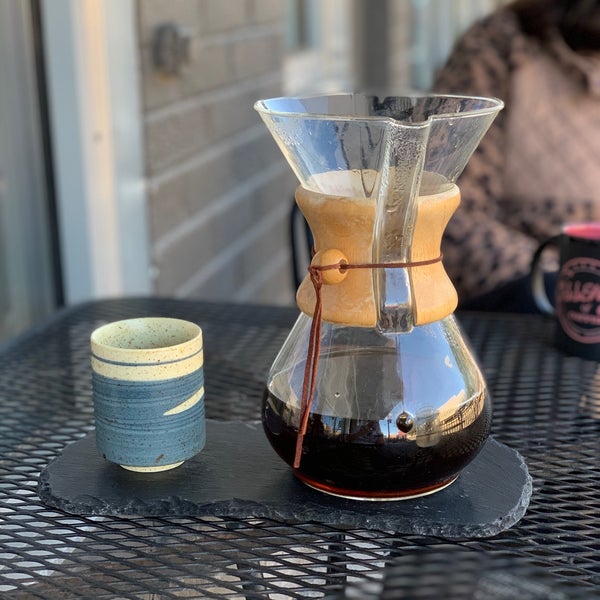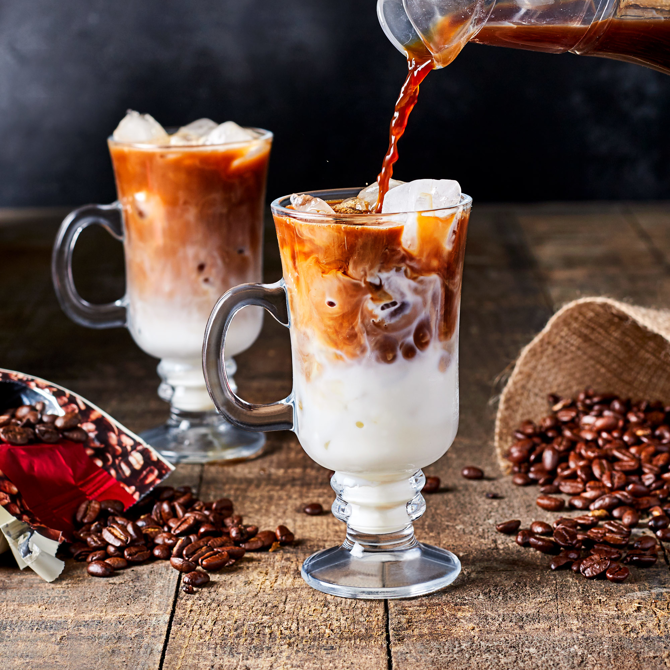Crafting the Perfect Brew: Essence of Coffee Explored
The History and Evolution of Coffee
The essence of coffee goes beyond its rich aroma and the energizing effect it has on many of us; it has a deep history that spans centuries and continents. Coffee’s journey began in ancient Ethiopia, where legend has it that a shepherd named Kaldi discovered the energizing effect of coffee beans. His goats, after eating the beans from a certain tree, became so lively that Kaldi tried them himself and felt a similar vigor. Henceforth, coffee began its world conquest.
Coffee first became a staple in Yemen, where Sufi monks drank it to stay awake during long nights of prayer. It made its way to the Arabian Peninsula, evolving into the complex beverage we recognize today. By the 15th century, it had reached the rest of the Middle East, Persia, Turkey, and North Africa, becoming an integral part of social and cultural activities.
The 17th century saw coffee houses, dubbed ‘penny universities’ for the rich conversations they hosted, gain popularity in Europe, forging coffee’s status as a social lubricant. These establishments played a significant role in the spread of information and the birth of the Enlightenment.
Coffee cultivation spread to other parts of the world due to colonization, planting roots in the Caribbean, South America, and Asia. Today, it is a global phenomenon, shaping economies and cultural practices. The essence of coffee continues to evolve, as new brewing methods and flavor profiles emerge, illustrating humanity’s ongoing fascination with this versatile and beloved beverage.
Key Components of Coffee Flavor Profiles
Understanding the essence of coffee requires a dive into its flavor profiles. These profiles are complex. They depend on several key components: acidity, body, sweetness, bitterness, and aroma.
Acidity gives coffee its liveliness and brightness. It’s not about the pH level. It’s about the vibrant, tangy quality, often similar to that of fruit. Coffees with high acidity can feel crisp, sparkling.
Body describes the ‘weight’ of coffee on your tongue. It ranges from light and tea-like to heavy and creamy. Body affects how coffee feels in your mouth.
Sweetness in coffee is a natural counterpart to acidity. It can bring balance. Look for hints of sugar, fruit, or even chocolate. Sweetness does not mean sugar was added. It’s inherent in the beans.
Bitterness is a natural part of coffee’s essence. It should balance with the other flavors, not overwhelm them. A well-brewed cup has just enough bitterness to add depth.
Aroma is crucial. Our sense of smell greatly impacts taste. Coffee can have floral, fruity, nutty, or chocolaty aromas. These contribute to the overall experience.
Together, these components create the unique essence of coffee in each cup. The key to enjoying coffee is finding the right balance that speaks to your palate.

The Role of Coffee Beans: Varietals and Origins
The essence of coffee is inextricably linked to the beans themselves. Coffee beans come from the seeds of the Coffea plant. There are many varietals. Each one carries unique traits. These traits influence flavor, aroma, and body.
Coffee varietals are diverse. They have exciting names like Bourbon, Geisha, or Typica. Origins are just as important. Beans from Brazil may taste nutty and chocolatey. In contrast, Ethiopian beans often have floral or fruity notes. The soil, climate, and elevation at the origin contribute to these qualities.
The culture and methods of cultivation also play a role. Some regions handpick their beans with care. Others may use mechanized harvesters. The way farmers process beans after picking can affect the essence of coffee too.
The terroir, or the environment in which the coffee is grown, is crucial. Beans from a single region, ‘single-origin’, offer distinct flavors. Blends combine beans from various origins. This creates a balanced and complex cup. The choice between single-origin and blends depends on personal taste.
In summary, the varietals and origins establish the groundwork for the essence of coffee. Exploration of different coffee beans can lead to a deeper appreciation of this beloved beverage.
Extraction Methods and Their Impact on Taste
Extraction is key to unlocking the essence of coffee. The method used can change a coffee’s taste. There are several ways to extract flavor from coffee beans. Each method can highlight different elements of taste.
Espresso uses pressure to extract coffee quickly. This method emphasizes the body and richness of the coffee. It often brings out deeper, darker flavors.
French Press, also known as plunger coffee, soaks the coffee grounds. This method allows oils and fine particles into the cup, enhancing the coffee’s mouthfeel and complexity.
Pour-Over techniques involve pouring water over coffee grounds in a filter. This method can bring out the coffee’s acidity and clarity of flavors.
Cold Brew is steeped in cold water over a long period, often overnight. This method results in a smooth and sweet taste because it reduces bitterness and acidity.
Each extraction method impacts the balance of the key flavor components. It can accentuate or mute the acidity, body, sweetness, bitterness, and aroma. The choice of method depends on personal preference and the desired flavor profile. Experiment with different techniques to discover how they alter the essence of coffee in the cup.

The Art of Roasting: How It Transforms the Bean
Roasting is crucial in defining the essence of coffee. It’s when raw, green beans become the rich, aromatic ones we love. The roasting process involves heating the coffee beans to high temperatures. This causes a series of chemical reactions. These reactions develop the bean’s flavor, color, and aroma.
During roasting, beans go through several stages. They begin to turn yellow as they release moisture. Then, they brown as sugars caramelize and oils emerge. The ‘first crack’ signals a light roast; beans pop like popcorn. Medium roasts develop as the beans continue to expand. The ‘second crack’ ushers in a dark roast, with a bold, robust flavor.
The roaster’s skill is key. They must decide when to stop the process. Light roasts retain more of the bean’s original character. They’re often more acidic and complex. Dark roasts are smoother and more intense. But if roasted too long, beans can become bitter.
Temperature and timing are critical. Small adjustments can alter taste. Roasters use their senses of sight, smell, and sound to judge beans’ readiness. The perfect roast balances sweetness, bitterness, body, and aroma. That balance is the essence of coffee in every cup.
Grinding for Perfection: Particle Size and Consistency
Grinding is a critical step in coffee preparation. The particle size and consistency directly influence the essence of coffee. Fine or coarse grinds can drastically change your coffee’s flavor. Let’s dive into why this is important.
Particle Size Impact
Fine grinds are best for methods like espresso. They create a dense, rich flavor. The surface area is increased, which enhances extraction. But, too fine could lead to bitter coffee.
Coarse grinds suit methods like French Press. They provide a cleaner cup, with less bitterness. Larger particles extract flavors more slowly.
Consistent particle size matters. It ensures even extraction. An uneven grind means some parts over-extract while others under-extract. This results in a cup that can taste both bitter and sour.
Consistency is Key
Consistency in grind size contributes to the balance in your coffee. A uniform grind allows for the best extraction of flavors. It can mean the difference between an average cup and a superb one.
Using a quality grinder is crucial. Burr grinders are preferred over blade grinders. They provide consistent grind sizes, which is essential for the perfect brew. Adjusting grind size lets you control the extraction and, ultimately, the taste.
To find the right grind size, consider your brewing method. Adjust and taste as you go. Strive for a grind that gives a balanced cup, representing the true essence of coffee. Remember, a little tweak can make a big difference.

Water Quality and Temperature in Coffee Brewing
Water quality and temperature are essential factors in coffee brewing that affect the essence of coffee. Impurities in water can result in off-flavors, while the right temperature extracts the best flavor.
Water Quality Makes a Difference
Pure, clean water is a must for brewing coffee. Minerals in water can enhance or detract from flavor. Soft water might not bring out the full range of coffee’s taste. Hard water with many minerals can lead to a build-up in your coffee equipment and could alter the taste unfavorably.
Filtered or bottled water is often recommended to maintain consistency in flavor. The aim is to use water that’s free of odors or tastes that could affect the coffee’s essence.
Temperature is Crucial
The right brewing temperature is typically between 195°F to 205°F (90°C to 96°C). Water too hot can burn the coffee, causing bitterness. Water not hot enough might not extract the full flavor, resulting in a weak or flat taste.
Temperature control is vital. Especially for methods like the pour-over, where water is poured over coffee grounds. A consistent temperature during brewing ensures the best possible extraction of flavors.
In conclusion, to preserve the essence of coffee, attention to water quality and the temperature used for brewing is pivotal. These elements help to unlock the full potential of your coffee, from its aroma to its body and overall taste profile.
The Ritual of Brewing: Techniques and Traditions
The ritual of brewing coffee has deep cultural roots and an array of techniques that reflect different traditions around the world. In Italy, the espresso machine dominates, a quick press of a button and a rich crema-topped espresso pours out. Turkish coffee, where grounds are simmered with water and sugar in a special pot called a cezve, is famed for its intensity. The Japanese favor precision with their pour-over methods, pouring hot water in slow, circular motions for an evenly extracted cup. In the Nordic countries, the focus lies on the light roast and the filter brew, highlighting the delicate flavors of the beans.
Each brewing technique involves its own set of practices. The espresso requires a fine grind and swift extraction. Pour-over methods call for a steady hand and patience for the water to drip through the grounds. In contrast, the French Press needs a coarse grind and a longer steep time to produce a full-bodied cup. Even with an AeroPress, an inventive device, brewing combines air pressure and short steep time, giving a smooth and robust result.
But brewing is not just about techniques, it’s about the ritual. Grinding beans fresh, measuring the right amount, boiling water, and pouring it over the grounds – all these steps are part of a calming, almost meditative process. Many coffee enthusiasts find this preparation phase to be a comforting routine that enhances the experience of enjoying the final cup.
Embracing these brewing techniques and rituals can lead to a deeper appreciation of the essence of coffee. With every method offering a different facet of flavor, body, and aroma, the exploration becomes part of the coffee experience. It’s about finding the ritual that resonates with you and allows the essence of coffee to shine in every cup you brew.
